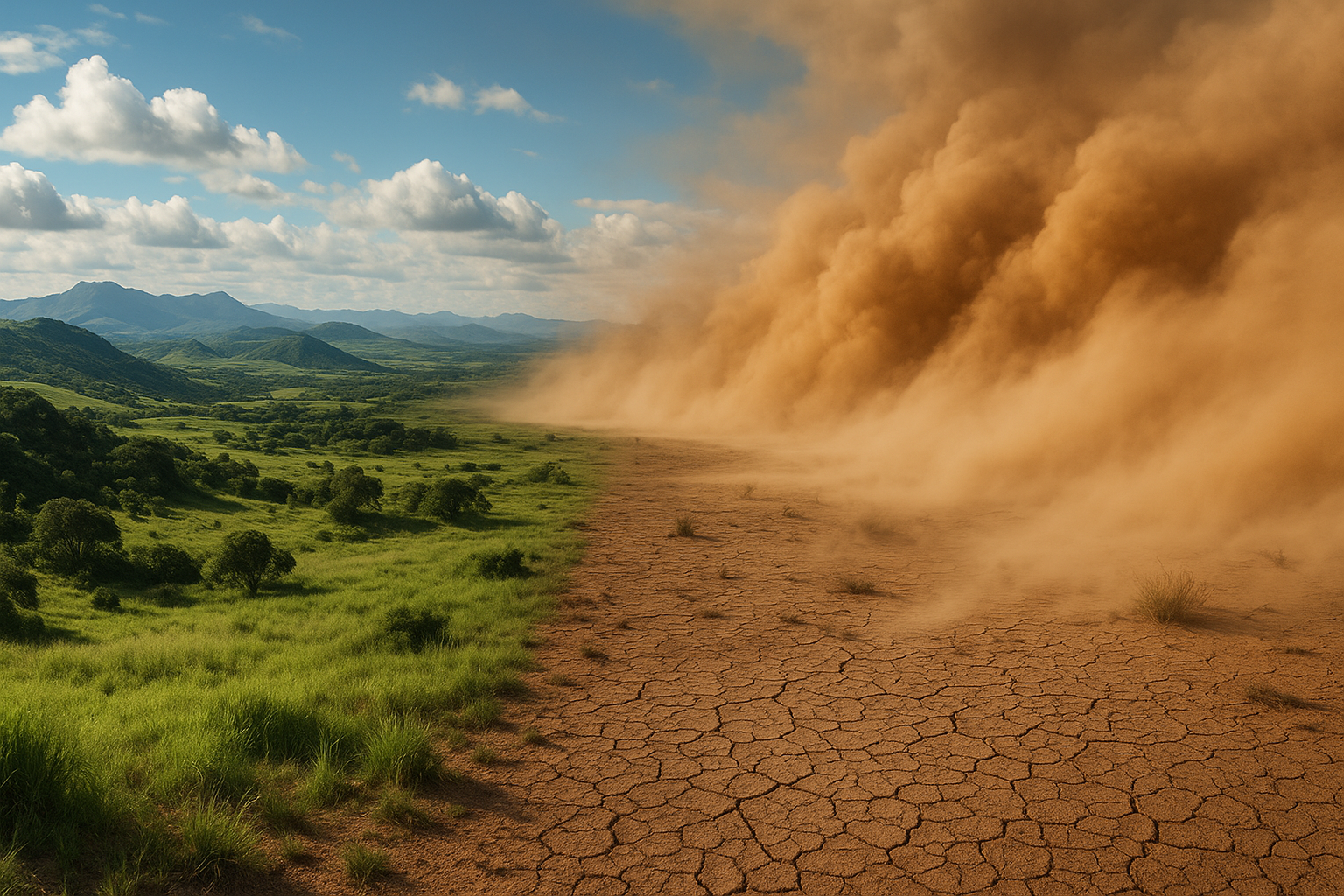From Green to Brown: How Rising Heat Is Turning the World’s Continents to Dust
"Continental Drying” warns that rising global temperatures and human land-use change are accelerating the desiccation of continents, disrupting ecosystems, agriculture, and water security worldwide. It calls for urgent emission cuts and smarter water management to prevent irreversible planetary aridity.

The study "Continental Drying" delivers a compelling scientific and narrative exploration of the global desiccation crisis, supported by research from leading institutions such as NASA, NOAA, the European Space Agency (ESA), and the Intergovernmental Panel on Climate Change (IPCC). Using decades of satellite data and hydrological models, including NASA's GRACE and SMAP missions, it traces how rising temperatures and altered rainfall patterns are reshaping the world's water systems. The report establishes that as the atmosphere warms, it extracts moisture from land faster than it can be replenished, leading to a steady expansion of drylands across continents.
The Physics of a Drying World
The study explains that each one-degree Celsius rise in temperature increases the air's capacity to hold water by about seven percent, dramatically intensifying evaporation and evapotranspiration. Even regions that experience heavy rains face a paradox, intense storms followed by longer droughts, leaving soils drier overall. The report calls this new phase "intermittent abundance and chronic scarcity," a world where water arrives in violent bursts but seldom stays. This shift marks a profound transformation in the planet's hydrological balance, where once-stable systems now swing between flood and desiccation.
Continents Under Strain
Across Africa, the Sahel's fragile recovery from past droughts is collapsing as irregular rainfall and rising temperatures drive soil exhaustion and migration. Southern Africa's aquifers are shrinking while major rivers such as the Limpopo and Orange run thinner each year. In Asia, the Gobi Desert advances across northern China and Mongolia, and the Tibetan Plateau, Asia's "Third Pole", is melting rapidly, threatening rivers that sustain nearly two billion people. In Europe, the Mediterranean Basin is drying at an unprecedented pace. Southern Europe's farmlands and forests are yielding to heat and aridity, while central and northern regions experience hotter summers that cancel out wetter winters. Across the Americas, the U.S. Southwest is trapped in a historic "megadrought," the worst in over a thousand years, crippling the Colorado and Rio Grande basins. In South America, the Amazon's deforestation weakens its own rainfall system, while Argentina and Brazil battle erratic precipitation and shrinking wetlands. Australia, already parched, faces a future defined by declining winter rainfall and a 30 percent drop in water inflows to the Murray–Darling Basin, a preview of the global pattern to come.
The Science Behind the Shift
The report attributes this worldwide drying not simply to less rainfall, but to energy imbalance. Increased radiative forcing elevates the vapor pressure deficit, pulling moisture from vegetation and soils even without precipitation decline. Human land-use changes magnify this effect, deforestation reduces evapotranspiration, agriculture depletes soil carbon, and urban expansion seals surfaces that once absorbed water. These feedbacks heighten surface heating, shift atmospheric circulation, and lock regions into self-sustaining aridity. Scientists call these "energy-driven droughts," in which heat, rather than mere lack of rain, becomes the primary drying force.
Human and Ecological Costs
The consequences are devastating. Expanding drylands erode biodiversity, with wetlands turning saline and forests retreating. Agricultural yields are plummeting across Africa, South Asia, and Latin America, displacing rural populations and triggering migration toward urban areas already burdened by water scarcity. Hydropower production is faltering as reservoirs shrink, while thermal plants struggle with cooling-water shortages. Even cities once thought water-secure, Los Angeles, Cape Town, São Paulo, have come perilously close to "Day Zero" scenarios. Transboundary rivers such as the Indus and Mekong are becoming potential flashpoints for geopolitical tension, underscoring how drying landscapes can ignite human conflict.
Paths Toward Resilience
Despite its alarming findings, the report identifies glimpses of hope. Nations are experimenting with water recycling, managed aquifer recharge, drought-tolerant crops, and ecosystem restoration. Israel's advanced reuse systems, China's reforestation efforts, and Australia's integrated basin management are cited as evidence that technological and policy innovation can mitigate some impacts. However, Continental Drying warns that adaptation alone is insufficient, without rapid global reductions in greenhouse gas emissions, the limits of human and ecological resilience will soon be breached.
The study's tone blends scientific rigor with poetic urgency. Earth, once known as the blue planet, is fading toward brown at its edges, its rivers, soils, and forests losing the moisture that sustains life. The drying of continents, it concludes, is not only an environmental crisis but a moral one, revealing humanity's fragile covenant with the water that made civilization possible.
- FIRST PUBLISHED IN:
- Devdiscourse
ALSO READ
-
Jared Isaacman Re-nominated for NASA Administrator Amid SpaceX and Trump Tensions
-
Trump Re-Nominates Jared Isaacman as NASA Administrator
-
Jared Isaacman's NASA Re-nomination Amid Trump-Musk Dynamics
-
Jared Isaacman: Trump's Bold Pick to Lead NASA's New Space Era
-
Trump Nominates Jared Isaacman as NASA Administrator









